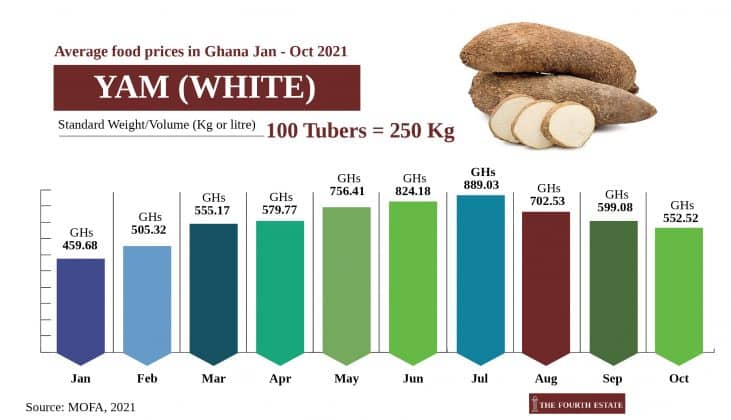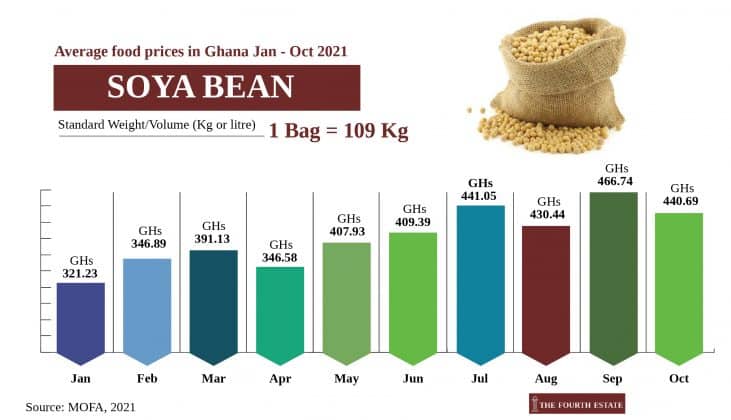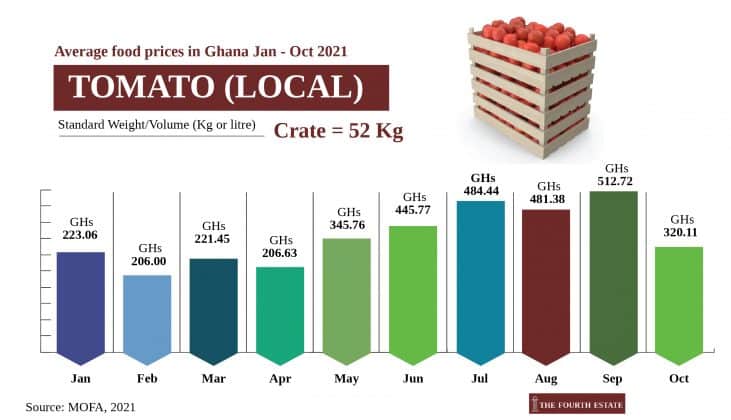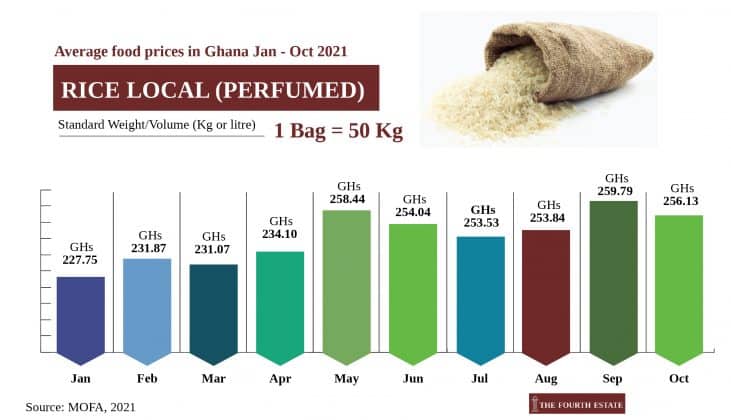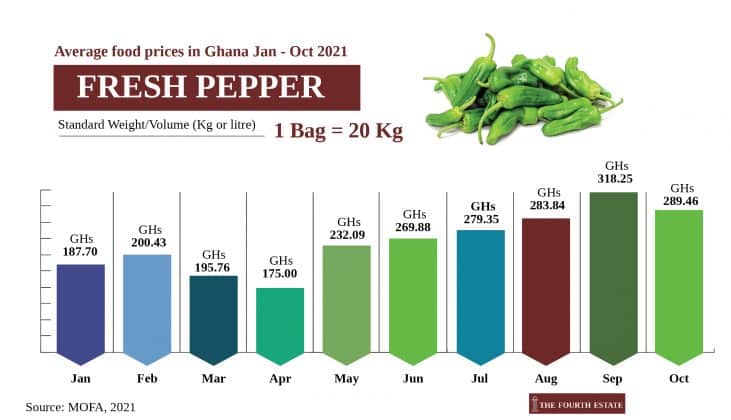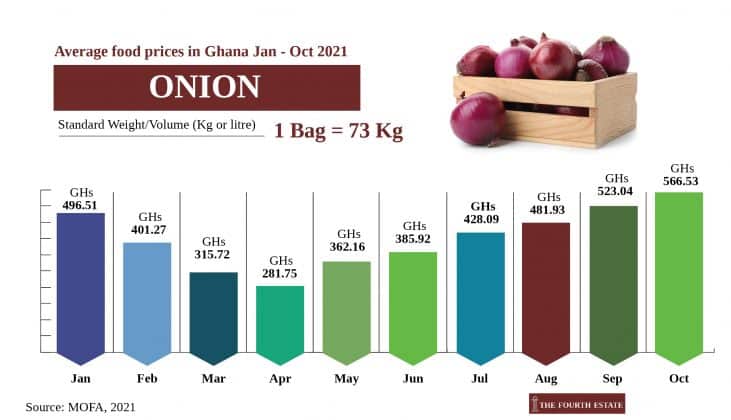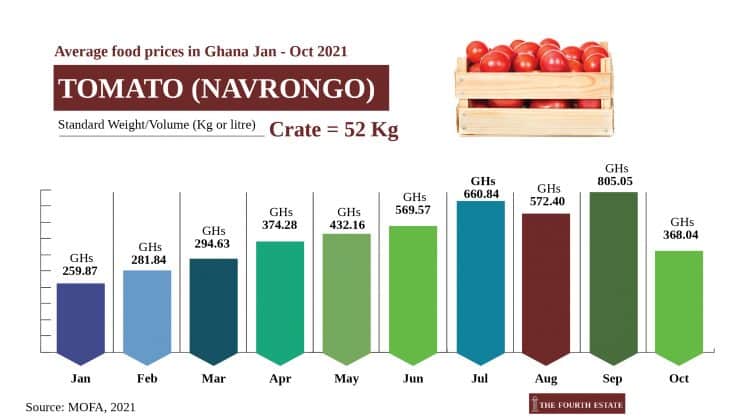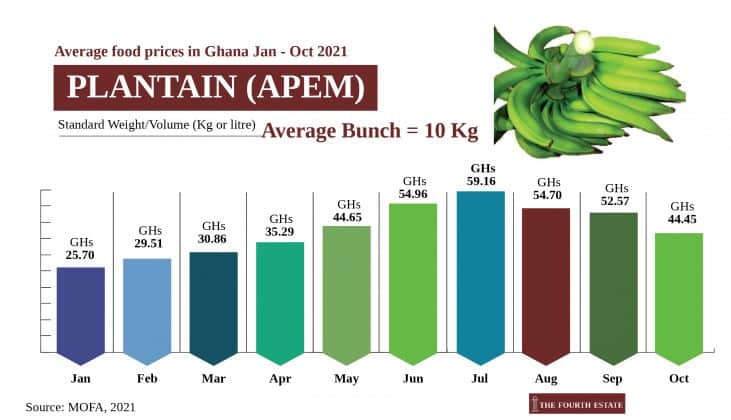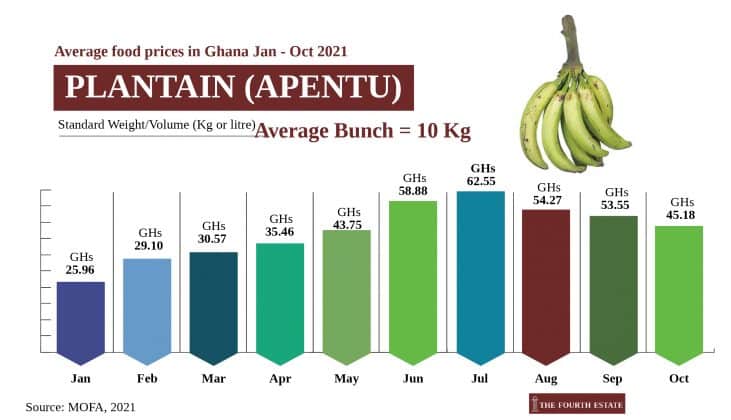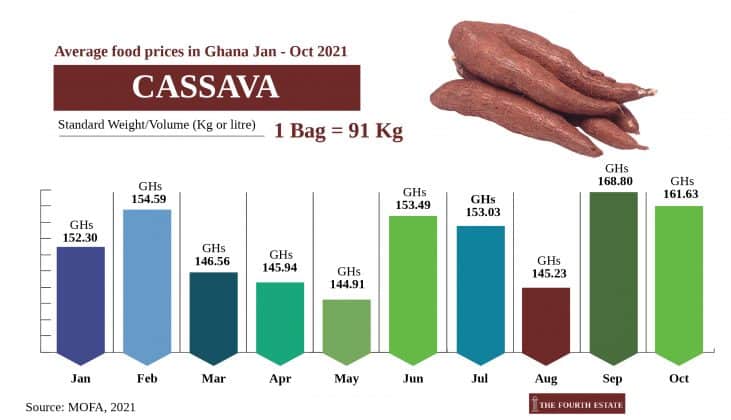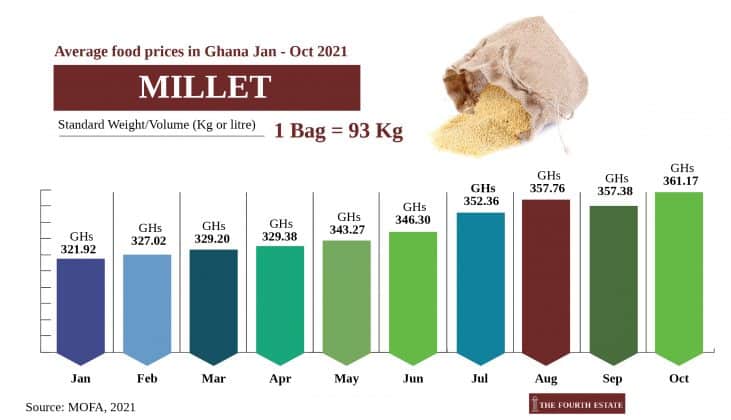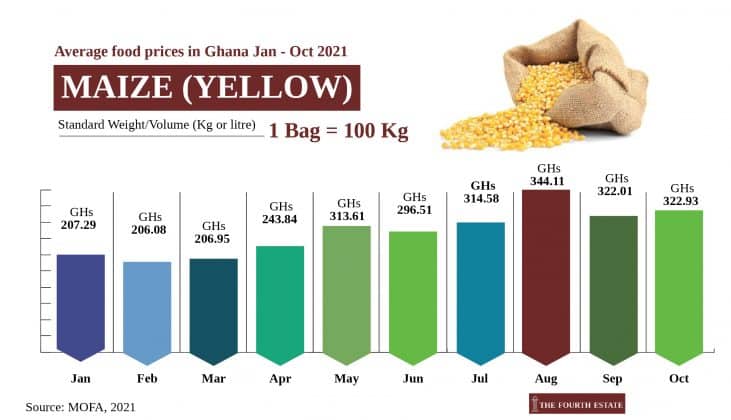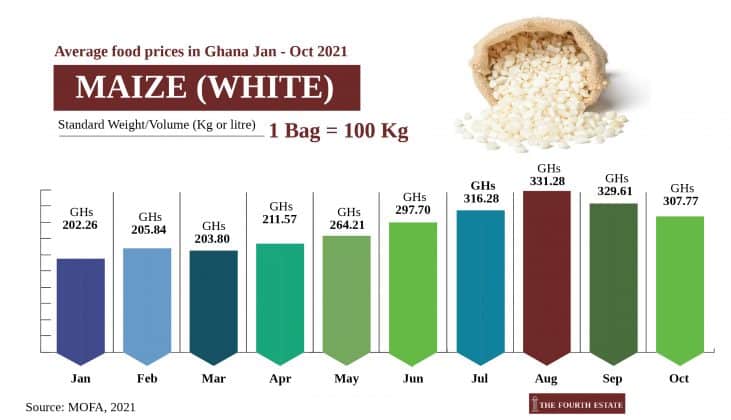The Minister of Food and Agriculture, Dr Owusu Afriyie Akoto, has challenged the assertion that the prices of food have increased.
The minister says data available to the Ministry of Food and Agriculture does not support the claim that food prices are rising.
“That is a wrong perception. The statistics that we compile in this ministry do not support that [claim]. The size of Kenkey you are talking; this is our fifth year of planting for food and jobs, nobody complains about the reducing size of kenkey until this.” Dr Akoto said responding to claims of hiking food prices at the swearing-in ceremony of the newly appointed members of the Irrigation Company of Upper Region (ICOUR).
Last year, in April, Dr Owusu Afriyie Akoto made a similar argument of food prices dropping when people complained of price hikes following the outbreak of the COVID-19 pandemic.
The Minister’s recent statement has occasioned a debate across various media platforms where many are divided on the issue.
Akufo Addo’s agric minister said, there’s no increment in prices of foods, size of kenkey has not reduced but it’s the perception of Ghanaians.
— ANNAN PERRY ARHIN (@AnnanPerry) November 15, 2021
agric minister be funny man, we we dey buy the beans say the thing come make expensive but you say your statistics dey show otherwise, statistics 3ma protein??
— dracojeremy🔫 (@jeremyb___) November 18, 2021
Traders in some selected markets in Accra who were interviewed by the media have labelled the minister’s claim as false.
“The Minister is lying, it’s not true. If you want to know the truth, he should enter into the market you will see what I am talking about. The margarine [measuring cup] of beans is 6 cedis first was 3 cedis; with red oil, it is 16 cedis, the yellow one is 20 cedis but first it was 15, now it is very expensive,” a trader at Kwasia Dwaso in Accra told a journalist of Accra-based TV3.
The General Secretary of the General Agricultural Workers Union (GAWU), Edward Kareweh, who waded into the conversation also said food prices are high on the market, even though Ghana is in a harvest season.
“We should expect prices to go up further. We are in a harvest season and so ordinarily, food prices should have been down. But we are not experiencing that,” he said.
In contrast, the PRO of the Ministry of Food and Agriculture, Bagbara Tanko, has assured that prices of food are going to reduce.
“Reports received from our regional directors on the participation from the Planting for Food and Jobs and even commercial participation show that there will be a bumper harvest. We will not be hungry and the increased harvest is sure to reduce price of food because we will soon be in the midst of plenty. Northern Ghana has started harvesting and the crop season has been excellent. The floods didn’t have a significant effect on crop harvest,” Mr Tanko said.
Fact-Check Ghana has verified the claims about the food prices and presents the facts below.
Data from the ministry of agriculture indicate rising food prices
Data from the Statistics, Research and Information Directorate (SRID) of MOFA available to Fact-Check Ghana indicate a rising trend in the prices of commodities across markets in Ghana.
SRID of MODA compiles weekly prices for some agricultural commodities across selected cities/towns in Ghana. These commodities include maize (white), maize (yellow), millet, sorghum, rice local (perfumed), rice local (non-perfumed), rice imported (perfumed), and rice imported (non-perfumed), Yam (white), Yam (puna), cocoyam, cassava, plantain (apentu), and plantain (apem).
The prices are compiled from 20 markets across the country. These markets include Agogboloshie (Greater Accra Region), Tema (Greater Accra Region), Takoradi (Western Region), Cape Coast (Central Region), Koforidua (Eastern Region), Kumasi (Ashanti Region), Sunyani (Bono Region), Kintampo (Bono East Region), Tamale (Northern Region, Techiman (Bono East), Bolgantanga (Upper East), Wa (Upper West and Yendi (Northern Region).
Below is a table showing the average weekly wholesale prices of some selected commodities from January to October 2021
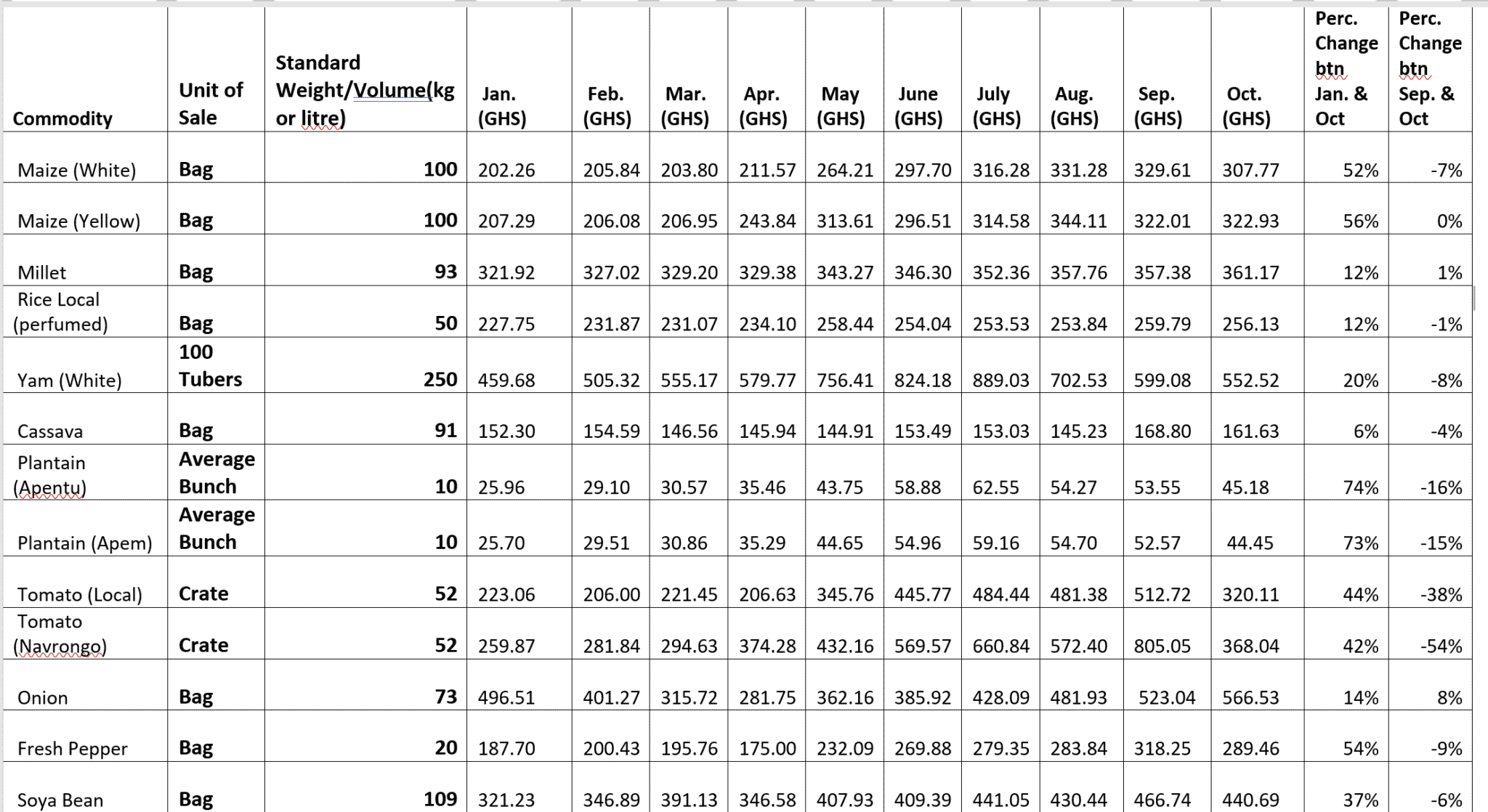
From the Table above, comparing prices of some of the selected food items from the beginning of the year (January) to October, prices have generally increased for all the food items. Plantain (Apentu) and Plantain (Apem) recorded the highest hike with 74% and 73% increments in prices, respectively.
This is inconsistent with the Agriculture minister’s claim that the statistics available to the ministry does not support the rise in prices of food.
However, comparing the prices of the selected food items in the month of September with October, the data indicate a general drop in food prices. Tomato (Navrongo) recorded the highest drop with 54%. Thus, the data indicate that the Minister’s claim is not entirely false as indeed prices for some of the food items have dropped, just for the month of October.
Finance Minister admits to rising prices
The Finance Minister, Ken Ofori-Atta, at the reading of the budget statement for the 2022 financial year on November 17 admitted that prices of food items have gone up in the last two months. The hike in food prices, according to him, has accounted for the rise in inflation.
The finance minister outlines farming input supply challenges, delay in harvest and climate-related factors as reasons for the rise in prices of food. Mr Ofori-Atta said this in paragraph 33 of the budget statement.
“Mr. Speaker, headline inflation declined sharply from 10.4 percent in December 2020 to 7.5 percent in May 2021, broadly reflecting well-anchored inflation expectations, exchange rate stability and favourable food prices. However, inflation picked up to 10.6 percent in September 2021 on account of shocks from domestic fuel price adjustments and increasing domestic food prices arising partly from climate-related factors, input supply bottlenecks, delayed harvests, and world food price increases,” he said.



